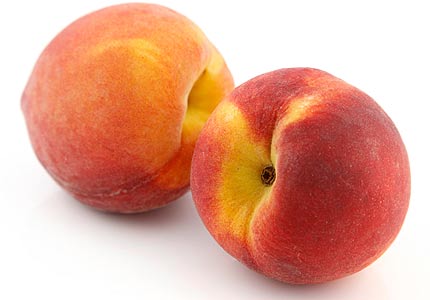 This year's peach season is just about over. Fresh peaches are no longer available in the stores or farm market stands. In the Northern Hemisphere they are harvested from late May to the end of August and each tree's production is only a week long.
This year's peach season is just about over. Fresh peaches are no longer available in the stores or farm market stands. In the Northern Hemisphere they are harvested from late May to the end of August and each tree's production is only a week long.Despite the botanical name, Prunus persica, which seems to credit the region of Persia for its origin, peaches are native to north-west China and have been growing there for 3,000 years. China is still the world's largest producer of the fruit. They did not arrive in the region of the middle east until 300BC, before being transplanted to Europe and then on to the Americas by Spanish explorers in the 16th Century. They were called "Persian Apples" by the Romans.
It has been documented that Thomas Jefferson had a peach orchard at his estate, Monticello, but commercial production in the United States did not get underway until later in the 19th Century in the east coast states of Maryland, Delaware, Georgia and Virginia. We all know that Georgia is nicknamed "The Peach State" but it is California that leads the nation in peach production with South Carolina second ahead of Georgia.
Something else you may not know is that peaches and nectarines are actually the same species of fruit. Due to a genetic mutation nectarines have a smooth skin while peaches are characteristically fuzzy. Fresh peaches are very healthy, full of Vitamins A, B & C and loaded with carbohydrates, dietary fiber, iron and potassium. But according to a study conducted by Oregon State University, canned peaches were found to have significantly higher levels of vitamin C and antioxidants than fresh ones.
So we don't need to wait until next year to enjoy the benefits of peaches!
No comments:
Post a Comment